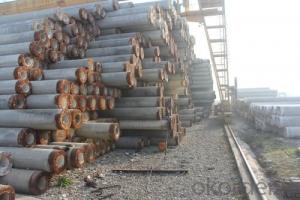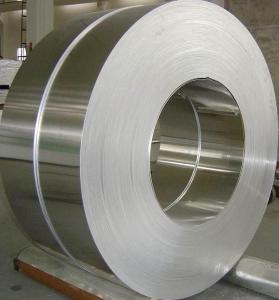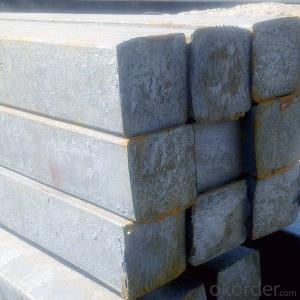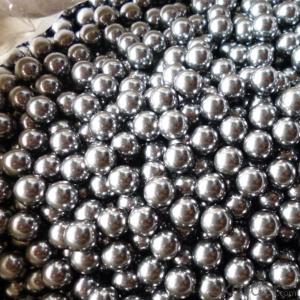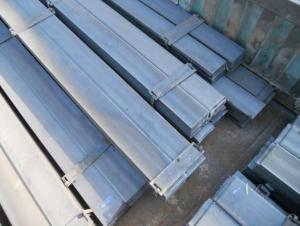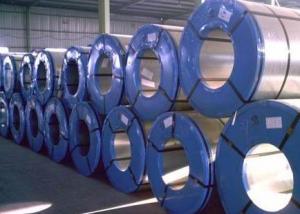PHC Pile
- Loading Port:
- China Main Port
- Payment Terms:
- TT OR LC
- Min Order Qty:
- -
- Supply Capability:
- -
OKorder Service Pledge
Quality Product, Order Online Tracking, Timely Delivery
OKorder Financial Service
Credit Rating, Credit Services, Credit Purchasing
You Might Also Like
We mainly engaged in manufacturing PHC concrete piles with diameters of Φ600~Φ1400 for wharf. Every year, the company produces various types of concrete piles of over 150,000 meters with single-section pile of 41meter long and annual gross output value up to RMB 600 million.
With years’ manufacturing experience of concrete piles and a great number of excellent technological and management talents, the company persists in technical innovation and research of new products. The large-diameter PHC concrete piles with merits such as good bending strength, large bearing capacity, fine resistance against the external force and so forth have been the preferential choice of structural materials for foundation engineering construction such as large ports, wharfs, shipyard, huge bridges, high-rise buildings, heavy factories, high-speed railway, etc.
The company holds the operation philosophy of “honest, practical and harmonious for win-win” and persists in the quality guideline of “constant improvement with prohibition of non-conforming products into construction site” to provide you sincerely with superior products and service.
Detailed introduction to PHC PILE:
PTC C70
Φ400 X 70mm ≤12m
Φ500 X 80mm ≤13m
Φ550 X 80mm ≤13m
Φ600 X 80mm ≤13m
PC or PHC(C70 A or C80 AB)
Φ400 X 90mm ≤14m
Φ500 X 100mm ≤15m
Φ500 X 120mm ≤15m
Φ500 X 125mm ≤15m
Φ550 X 100mm ≤15m
Φ550 X 120mm ≤15m
Φ600 X 110mm ≤15m
Φ600 X 130mm ≤15m
- Q:What are the different types of steel used for round bars?
- There are several different types of steel used for round bars, including carbon steel, alloy steel, stainless steel, and tool steel. Each type has its own unique composition and properties, making them suitable for various applications and industries.
- Q:Can stainless steel channels be customized according to specific requirements?
- Indeed, specific requirements can be accommodated with customized stainless steel channels. The versatility of stainless steel allows for effortless shaping and modification to fulfill unique design or functional demands. This encompasses tailoring the dimensions, lengths, and shapes of stainless steel channels to suit specific requirements. Furthermore, stainless steel can be further personalized with different surface finishes or coatings to enhance its visual appeal or bolster its resistance against corrosion. In summary, stainless steel channels provide ample flexibility and can be finely tailored to meet the precise needs of any project.
- Q:Can steel structures be designed to be aesthetically pleasing?
- Yes, steel structures can definitely be designed to be aesthetically pleasing. The versatility of steel allows for creative and innovative designs that can enhance the visual appeal of a structure. With careful consideration of materials, finishes, and architectural elements, steel structures can be made to blend seamlessly with their surroundings or stand out as iconic landmarks.
- Q:How do you remove rust from steel pipes?
- To remove rust from steel pipes, there are several methods you can try: 1. Use a wire brush or steel wool: Start by scrubbing the rusted areas with a wire brush or steel wool. This will help remove loose rust and flakes from the surface of the pipes. 2. Apply vinegar or lemon juice: Soak a cloth or sponge in white vinegar or lemon juice and apply it to the rusted areas. Let it sit for a few hours or overnight. The acidic properties of these substances can help dissolve the rust. 3. Use a rust remover or converter: There are various rust remover products available in the market. Follow the instructions on the product and apply it to the rusted areas. These solutions typically convert rust into a water-soluble compound that can be easily rinsed off. 4. Apply a paste of baking soda and water: Mix baking soda with water to create a thick paste. Apply the paste to the rusted areas and let it sit for a few hours. Scrub the area using a brush or steel wool, and then rinse it off. 5. Try using a commercial rust dissolver: If the above methods don't yield satisfactory results, you can consider using a commercial rust dissolver. These products are specifically designed to remove rust from various surfaces, including steel pipes. Follow the instructions provided by the manufacturer. Remember to wear protective gloves, goggles, and a mask when working with rust removal products, as they can be corrosive or release toxic fumes. Additionally, after removing rust, it is advisable to apply a rust-inhibiting primer or paint to prevent future rusting.
- Q:What are the different types of steel canopies and awnings used in buildings?
- There are several different types of steel canopies and awnings that are commonly used in buildings. These structures provide shade and protection from the elements, while also adding aesthetic appeal to the overall design of the building. Here are some of the most popular types: 1. Cantilevered Canopies: These canopies are supported by a single beam or column, extending outwards from the building without any additional support. Cantilevered canopies are often used in commercial buildings, providing shade for entrances, walkways, or outdoor seating areas. 2. Tensile Membrane Canopies: Tensile membrane canopies are made of a flexible fabric material that is stretched over a steel frame. These canopies can be custom-designed to create unique shapes and forms, offering a visually striking addition to the building. They are commonly used in stadiums, outdoor event spaces, or as car park covers. 3. Louvered Canopies: Louvered canopies consist of adjustable horizontal slats that can be opened or closed to control the amount of sunlight or rain that enters the space below. These canopies are ideal for areas where flexible shading is desired, such as outdoor patios or restaurant terraces. 4. Walkway Canopies: Walkway canopies are designed to provide shelter and protection for pedestrians moving between different sections of a building or across open spaces. These canopies are often used in educational institutions, hospitals, or office complexes to ensure people can move comfortably regardless of weather conditions. 5. Entrance Canopies: Entrance canopies are typically located above the main entrances of buildings, providing shelter for visitors and protecting the entrance area from rain or snow. These canopies can be simple in design, such as a flat metal roof with supporting columns, or they can be more elaborate with curved or angular shapes. 6. Window Awnings: Window awnings are smaller-scale structures that are mounted above windows to provide shade and reduce heat gain inside the building. These awnings can be fixed or retractable, allowing occupants to adjust the level of shading as needed. Each type of steel canopy or awning serves its own purpose and offers unique benefits. Whether it's providing shade, protecting entrances, or enhancing the architectural design, these structures play an essential role in enhancing the functionality and visual appeal of buildings.
- Q:What is the specific heat capacity of stainless steel?
- The specific heat capacity of stainless steel is typically around 0.5 J/g°C.
- Q:How are steel structures designed to resist fatigue and cyclic loading?
- Several methods are employed in the design of steel structures to withstand fatigue and cyclic loading. Initially, the expected loading conditions and stress levels that the structure will encounter during its lifespan are determined in the design process. This information is then utilized to establish the suitable design criteria and fatigue limits. To bolster fatigue resistance, one common approach involves the use of high-strength steel, which exhibits greater resistance to cyclic loading compared to lower-grade steels. Material properties such as yield strength, ultimate strength, and ductility are carefully considered during the design phase to ensure that the structure can endure cyclic loading without succumbing to fatigue failure. Moreover, the design of steel structures often incorporates various details and features to minimize stress concentrations, which are frequent sites for fatigue initiation. These features may include smooth transitions, fillets, and the avoidance of sudden changes in cross-sections. By decreasing stress concentrations, the risk of fatigue cracks forming is significantly reduced. Another crucial aspect of designing steel structures for fatigue resistance is the consideration of load paths. By effectively directing and distributing the applied loads, the structure can proficiently manage and dissipate the cyclic stresses it encounters. This can involve the incorporation of stiffeners, gussets, and bracing elements to ensure that the loads are efficiently transferred throughout the structure, thereby minimizing localized stress concentrations. Furthermore, regular inspections and maintenance play a vital role in ensuring the ongoing integrity of steel structures under cyclic loading. Periodic inspections can detect any indications of fatigue damage, such as crack initiation or propagation. This enables timely repairs or reinforcement before catastrophic failure occurs. In conclusion, the resistance of steel structures to fatigue and cyclic loading is achieved through the careful selection of materials, the avoidance of stress concentrations, the optimization of load paths, and the implementation of regular inspections and maintenance. By considering these factors, engineers can guarantee that steel structures can endure the repetitive loading they are subjected to, offering long-lasting and dependable performance.
- Q:Are stainless steel sheets suitable for petrochemical refineries?
- Stainless steel sheets are indeed appropriate for petrochemical refineries. They are an incredibly durable material that can endure harsh conditions and extreme temperatures, making them perfect for use in such facilities. This type of steel provides exceptional resistance to chemicals, acids, and caustic substances commonly found in the refining process. Moreover, stainless steel sheets possess outstanding mechanical properties, enabling them to withstand high pressure and stress, thereby ensuring longevity and dependability in refinery operations. Additionally, the non-porous surface of stainless steel prevents the accumulation of bacteria and other contaminants, making it both hygienic and easy to clean. All in all, due to their remarkable corrosion resistance, mechanical strength, and ease of maintenance, stainless steel sheets are the preferred choice in petrochemical refineries.
- Q:How is steel wire rod used in the manufacturing of wire forms for jewelry?
- Steel wire rod is an essential material used in the manufacturing of wire forms for jewelry. It is primarily utilized to create intricate and delicate wire shapes and structures that are commonly found in various types of jewelry, such as earrings, necklaces, bracelets, and rings. The steel wire rod is initially processed through a series of steps to transform it into a malleable and workable material. First, it is drawn through a die to reduce its diameter and achieve the desired thickness. This process, known as wire drawing, ensures that the steel wire rod becomes thin and pliable enough to be molded into intricate shapes. Once the wire rod has been drawn, it can be further manipulated and formed into various wire forms for jewelry. Skilled artisans use specialized tools, such as pliers, hammers, and mandrels, to bend, twist, and shape the wire into different designs. These wire forms can be as simple as loops or spirals, or they can be more complex and intricate, depending on the desired jewelry design. The steel wire rod's strength and durability make it an ideal material for creating wire forms that can withstand regular wear and tear. It provides the necessary support for gemstones, beads, and other decorative elements that may be added to the jewelry piece. Additionally, the steel wire rod's resistance to corrosion ensures that the wire forms remain intact and retain their shape over time. Furthermore, steel wire rod is often used as a base material for plating with precious metals such as gold or silver. The wire forms are coated with a thin layer of the desired metal, enhancing their aesthetic appeal and giving them a luxurious finish. This plating process adds value to the jewelry piece and makes it more visually appealing to customers. In summary, steel wire rod plays a crucial role in the manufacturing of wire forms for jewelry. Its malleability, strength, and resistance to corrosion make it an ideal material for creating intricate and durable wire shapes. Whether used as a base material or plated with precious metals, steel wire rod allows artisans to craft stunning and unique jewelry pieces that are both aesthetically pleasing and long-lasting.
- Q:What kind of welding rod should be used for rail and Q235A welding?
- MG600 is a universal, high efficiency, high strength chromium nickel alloy welding rod (welding wire). It has excellent plasticity, toughness and crack resistance. It is almost suitable for all kinds of common steel products. With excellent welding process performance, arc stability, easy to slag, less spatter, welding uniform and beautiful.
1. Manufacturer Overview |
|
|---|---|
| Location | |
| Year Established | |
| Annual Output Value | |
| Main Markets | |
| Company Certifications | |
2. Manufacturer Certificates |
|
|---|---|
| a) Certification Name | |
| Range | |
| Reference | |
| Validity Period | |
3. Manufacturer Capability |
|
|---|---|
| a)Trade Capacity | |
| Nearest Port | |
| Export Percentage | |
| No.of Employees in Trade Department | |
| Language Spoken: | |
| b)Factory Information | |
| Factory Size: | |
| No. of Production Lines | |
| Contract Manufacturing | |
| Product Price Range | |
Send your message to us
PHC Pile
- Loading Port:
- China Main Port
- Payment Terms:
- TT OR LC
- Min Order Qty:
- -
- Supply Capability:
- -
OKorder Service Pledge
Quality Product, Order Online Tracking, Timely Delivery
OKorder Financial Service
Credit Rating, Credit Services, Credit Purchasing
Similar products
New products
Hot products
Related keywords
